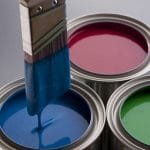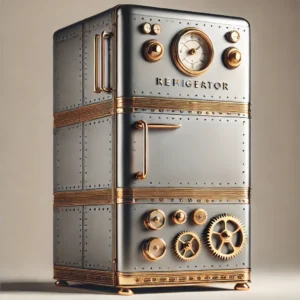Creative Ways to Embellish Furniture and Decor


There are many creative Ways to embellish furniture and decor other than painting or staining. I use the word embellish because it’s about adding more.
Whether it’s a thrift-store find or a revamp of a family heirloom. There are many ways to turn simple painted furniture into stunning statement pieces.
Here are the basics of stencilling, free-hand painting, applied wallpaper, and steampunk-inspired elements. I’ll expand on these and other types of techniques on separate pages.
1. Start with a Great Base Coat
A great furniture makeover begins with a solid base coat of paint. This is the foundation for all decorative techniques. So take your time to get it right.
Sometimes bold is just a punch of colour! Sometimes, it’s as simple as just being unusual.
Choosing the Right Paint
Chalk Paint

Ideal for creating a matte, vintage look with minimal prep work. Chalk paint adheres well to most surfaces and is easy to distress for a shabby-chic finish.
Latex Paint
:Offers a wide variety of finishes from matte to glossy and is known for its durability. Latex is great for high-use furniture pieces.
Milk Paint
A more natural option, milk paint gives a slightly textured, organic finish. It’s perfect for achieving a rustic or farmhouse-style aesthetic.
Application Tips
Sand and clean the furniture thoroughly before applying your base coat.
Apply at least two thin coats of paint to ensure full coverage, allowing each coat to dry completely.
For a professional finish, lightly sand between coats with fine-grit sandpaper.
Once your base coat is dry and even, you’re ready to get creative with your decoration techniques!
I’m a great fan of using a clear coat over my creations. It adds to durability.
2. Stenciling: Crisp Patterns with Ease
Stencilling is a fantastic way to add intricate patterns or bold designs to your furniture without needing advanced painting skills. You can use stencils to create repetitive patterns, borders, or even large feature designs.
How to Stencil on Furniture

Select the Right Stencil: Choose a stencil size that complements the furniture. For example, large stencils work well on tabletops or cabinet doors, while smaller designs can accent drawers or chair backs.
Position the Stencil: Secure the stencil with painter’s tape or stencil adhesive to avoid shifting. To achieve a repeat pattern, use a ruler or measuring tape to ensure even spacing.
Apply the Paint: Use a stencil brush or foam roller, dabbing or rolling paint lightly to avoid bleeding under the stencil edges. Start with light layers and build up coverage as needed.
Remove the Stencil Carefully: Lift the stencil gently while the paint is still wet to avoid smudging, and allow the paint to dry completely before handling the piece.
3. Free-Hand Painting: A Personal Artistic Touch

For those who want to add a truly one-of-a-kind touch to their furniture, free-hand painting allows you to create personalized, artistic designs. This method is perfect for adding whimsical details, florals, or abstract patterns that can’t be achieved with stencils.
How to Free-Hand Paint on Furniture
Start with a Sketch: Lightly sketch your design onto the furniture using a pencil or chalk. This helps guide your painting and ensures symmetry and proportion.
Use Quality Brushes: Invest in a variety of brush sizes. Smaller brushes help with detailed work, while the larger ones fill in broader sections.
Acrylic or Latex Paint: Both are excellent choices for free-hand designs. Acrylic dries quickly and offers vibrant colours, while latex provides more durability.
Layer Your Colors: Start with a base layer for your design and add depth by layering colours, shading, and highlights. Use a light hand and build up your design gradually.
Free-hand painting allows for creative freedom. You can tell a story through the piece or give it a unique character that reflects your style.
4. Applied Wallpaper: Texture and Patterns with Minimal Effort

Adding wallpaper to furniture can create a stunning focal point, especially for drawers, shelves, or cabinet backs.
It incorporates texture, patterns, or bold designs without intricate painting.
The wallpaper doesn’t have to be applied all over. It can used on drawers, sides, tops, or in moldings. A quick tip: Apply second-hand frames to highlight your additions.
How to Apply Wallpaper to Furniture
Choose the Right Wallpaper: Look for wallpaper that complements your painted base coat. Peel-and-stick wallpaper is ideal for furniture projects since it’s easier to apply and adjust. For more permanent solutions, traditional wallpaper can be used with wallpaper paste.
Prep the Surface: Make sure the surface is smooth, clean, and dry before applying wallpaper. Lightly sanding the area can help the adhesive stick better.
Cut to Size: Measure the area where you want to apply the wallpaper (such as drawer fronts or cabinet backs), then cut the wallpaper slightly larger than needed. Trim the edges after you’ve applied the paper to your piece.
Smooth Application: Starting at one edge, smooth the wallpaper into place using a squeegee or a credit card, pressing out any air bubbles as you go.
Seal the Edges: Use a clear sealer or Mod Podge to protect the wallpaper and prevent it from peeling over time.
Wallpaper can add elegance, whimsy, or bold contrast to your furniture, making it a fantastic option for a quick design update.
5. Steampunk: Industrial Meets Vintage Charm

Steampunk décor blends Victorian elegance with industrial elements, such as metal accents, gears, and worn finishes. This style works especially well on furniture, transforming simple pieces into eye-catching statements.
How to Achieve a Steampunk Look on Furniture
I can’t leave out steampunk when it comes to creative ways to finish furniture decor. It appeals to me on so many levels.

Metallic Finishes: Start by applying metallic paints, such as bronze, copper, or gunmetal, to give your furniture an industrial, weathered look. Dry brushing metallic paint over dark base coats can create a textured, antique effect.
Add Industrial Hardware: Replace standard knobs and handles with vintage metal hardware, gears, or industrial-inspired fittings. Copper pipes, metal brackets, and rivets are great for adding detail.
Attach Decorative Elements: Use epoxy glue or screws to attach steampunk accessories like gears, old clock parts, or even leather straps to the furniture.
Aged Look: Use distressing techniques to give the piece an aged, worn appearance. Lightly sand the edges and corners, allowing the base coat or wood to show through, mimicking years of wear.
Steampunk is one of the most imaginative ways to finish furniture and adds a bold, eclectic touch to any space, combining history and imagination with a unique industrial edge.
Final Thoughts: Make It Your Own
So this isn’t, by any means, all of the creative ways to embellish furniture. When it comes to decorating painted furniture, the possibilities are endless.
There’s a method that fits your style. The crisp lines of stencilling, the artistry of free-hand painting, the charm of applied wallpaper, or the statement of steampunk. Or a combination.
The key is to start with a great base coat, prep your surface well, and let your creativity guide the process.
Top Tip. Step back and review your piece. One of the keys to a great embellished piece is knowing when to stop!
